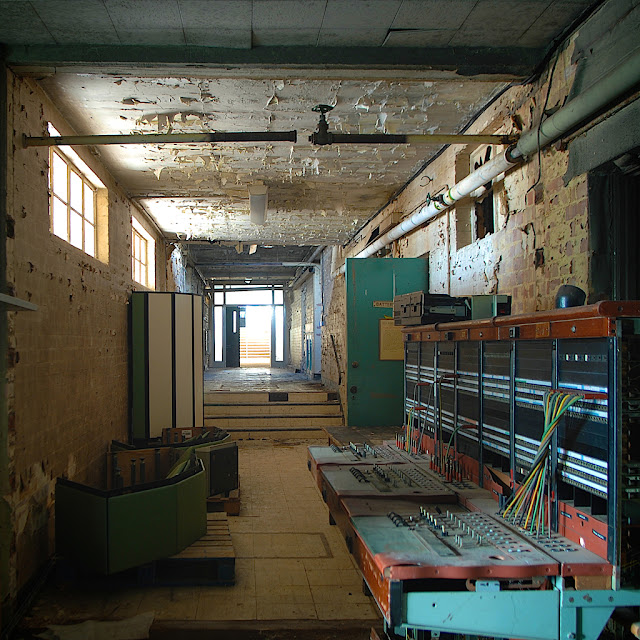 |
The vegetation outside Block C is nearly matched by parts of the inside but I didn't know that when this was taken. Photograph by Rachael Marshall.
|
|
|
|
 |
Through a window of Block C. Photograph by Rachael Marshall.
|
|
|
|
|
Growing up not far from Bletchley, the name of this small town in Buckinghamshire only meant one thing to me: the pyramid swimming pool with wave machine and flume where sis and I practiced swimming as low as we possibly could for as long as we could, tummies skimming the tiles at the bottom. The pyramid is now gone.
I'm not sure when I first heard the Bletchley Park codebreaking centre. I'm pretty sure I'd heard about it or read about it before the film Enigma was released in 2001 but wasn't aware that it was open to the public until the museum was mentioned at work, and that's when this project began. A colleague put me in touch with the architects (Kennedy O'Callahan) and the project really began when I first stepped inside Block C at the end of October 2010.
Before this my parents and I visited and had an nosy around the exteriors of the buildings, peeking through dusty, cobwebby windows of Blocks C and D. We enjoyed sausages and mash in the cafe and had a good look around the collections in the museum with handwritten labels. The
mannequin wearing an old Girl Guides uniform in the war-time room-set still amuses me.









